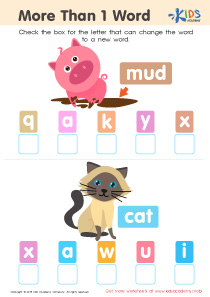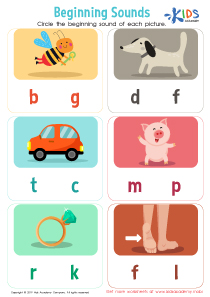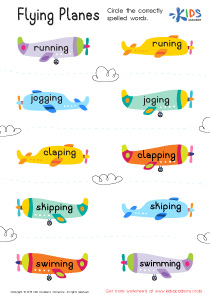Word Recognition Vowels Worksheets for Ages 4-9
8 filtered results
-
From - To
Unlock your child’s reading potential with our "Word Recognition Vowels Worksheets" designed for ages 4-9. These expertly crafted worksheets focus on helping young learners identify and pronounce vowels, a crucial step in mastering the fundamentals of reading. Through engaging activities, children can enhance their phonemic awareness and boost their vocabulary. Suitable for various learning styles, these worksheets support consistent practice at home or in the classroom. Give your child the tools they need to read confidently and fluently, and set them on a path to literacy success. Visit us today and start the learning journey!
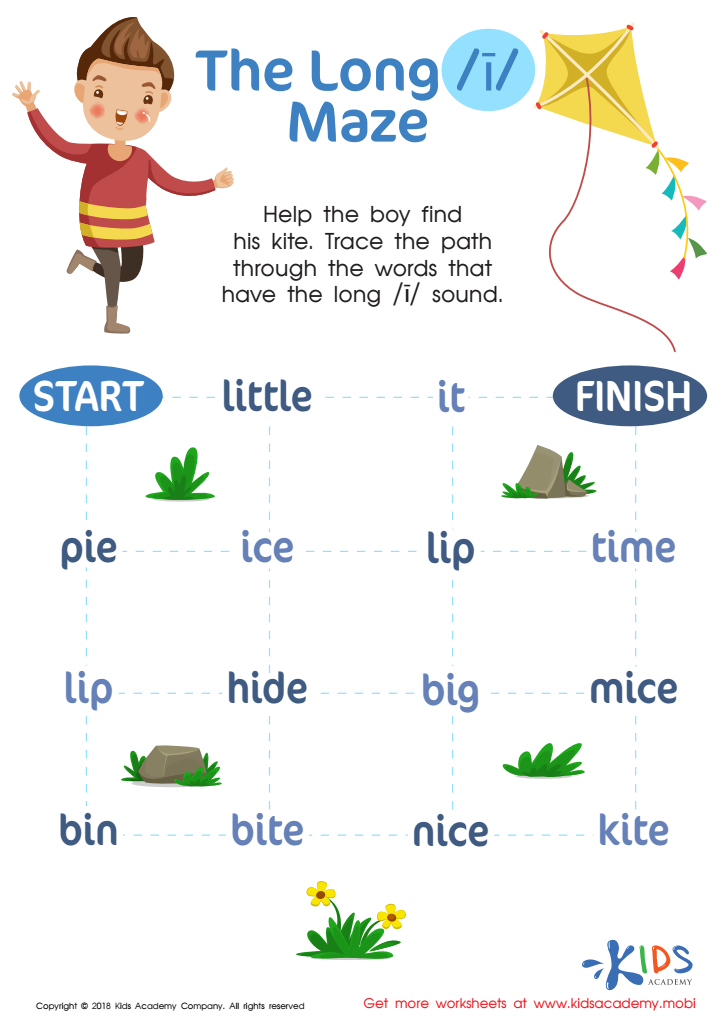

The Long I Maze Reading Worksheet
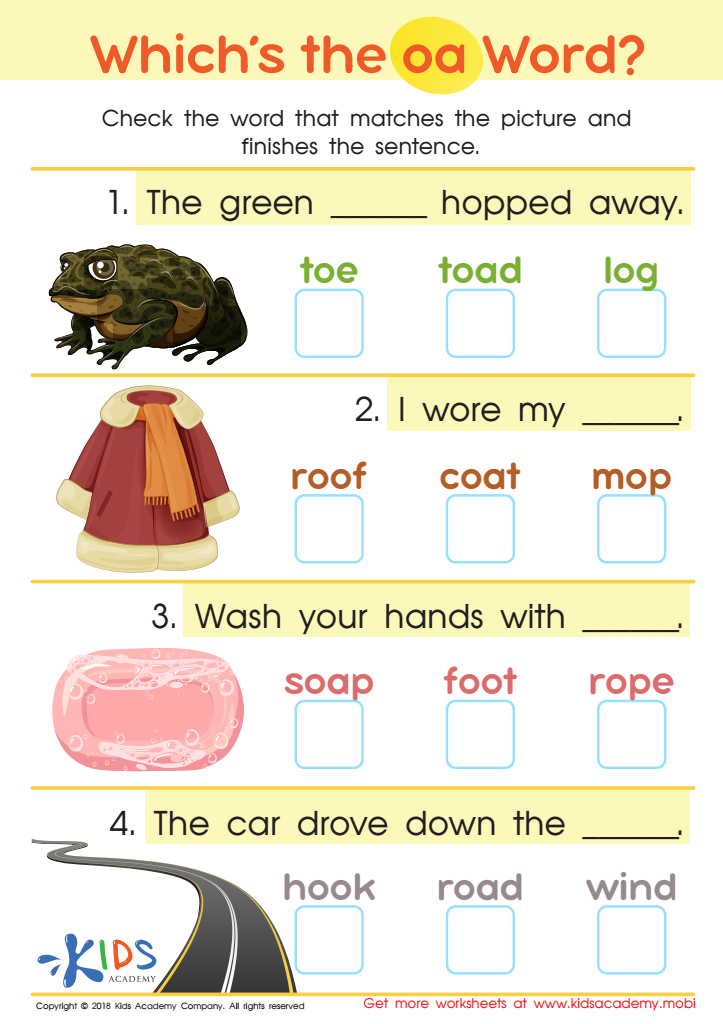

Which's the OA Word? Worksheet
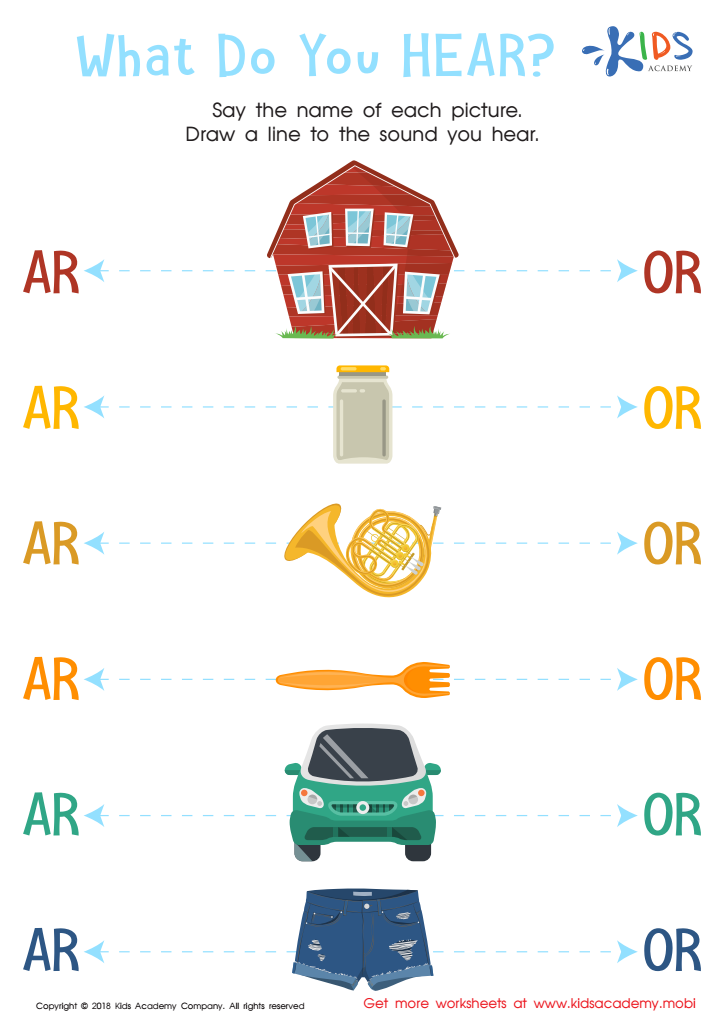

What do you hear Worksheet
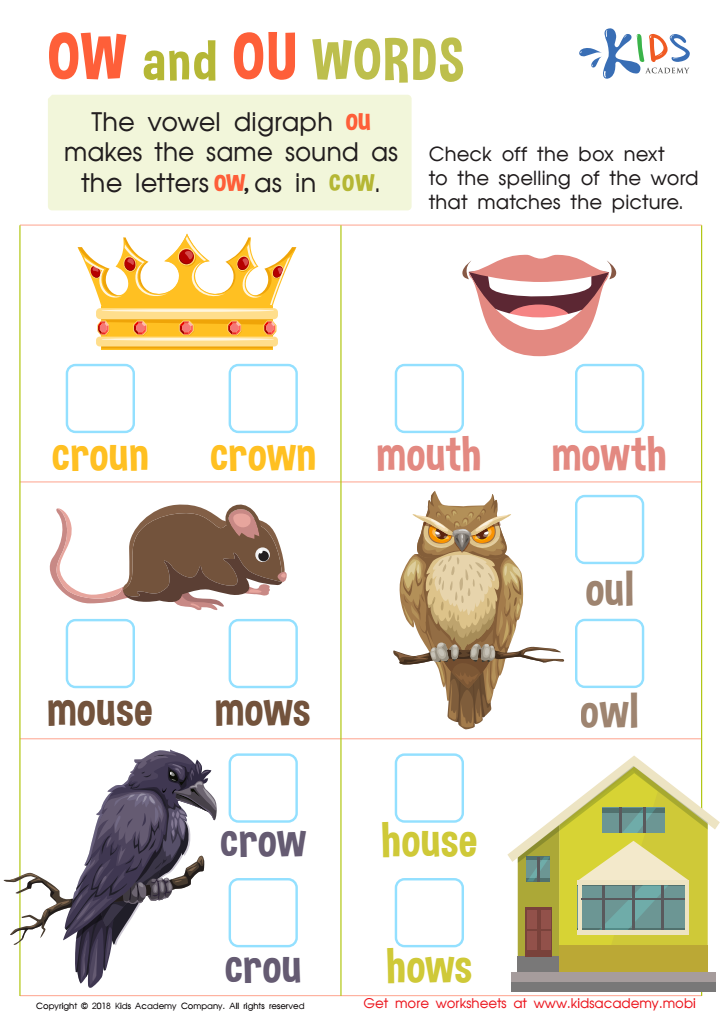

Reading: OW and OU Words Worksheet
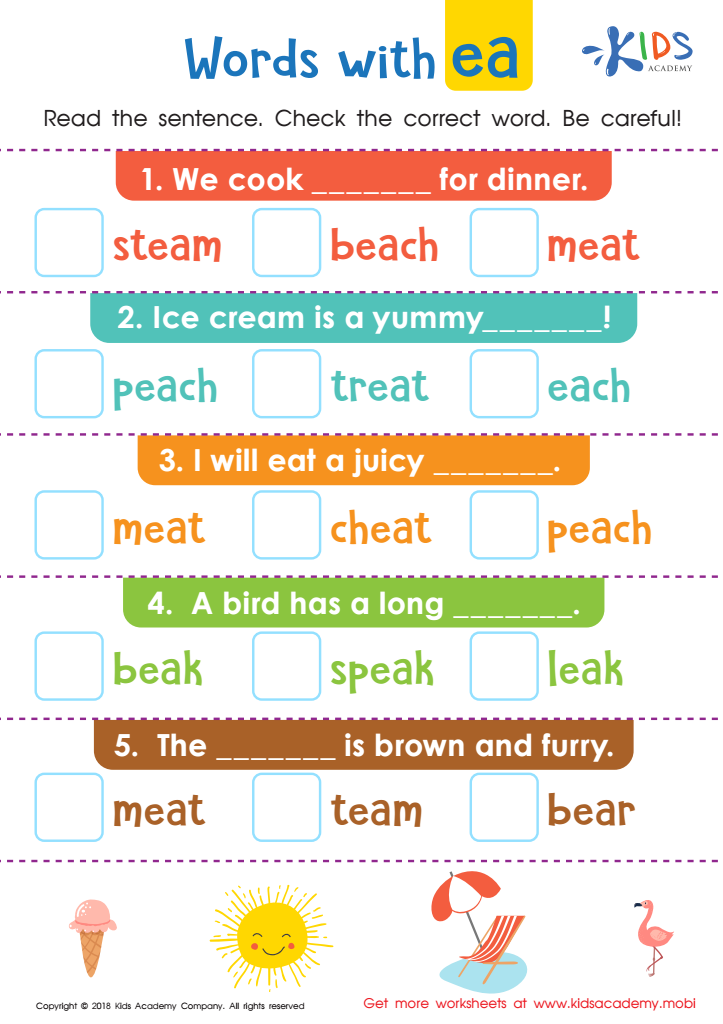

Words with ea Worksheet
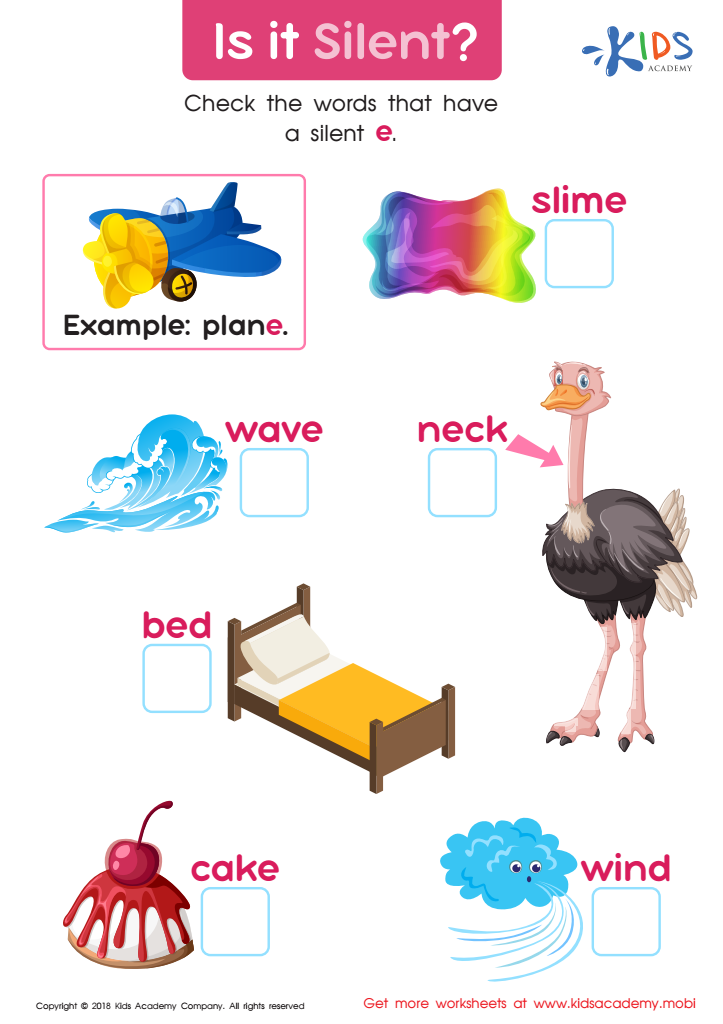

Is It Silent? Worksheet
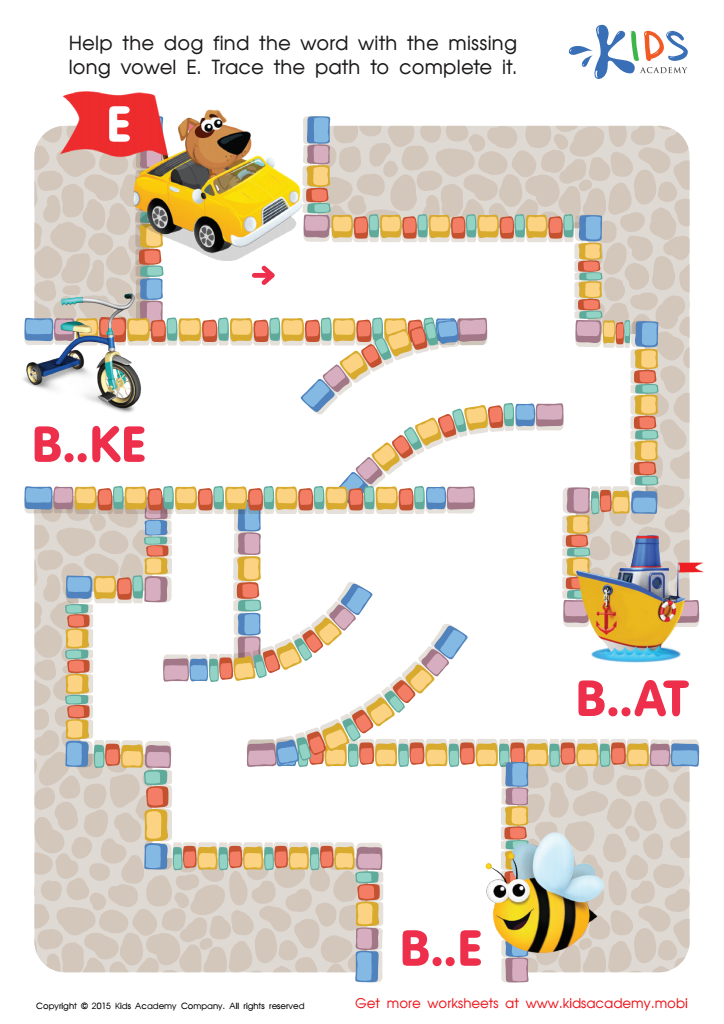

Long Vowel Sound E Worksheet
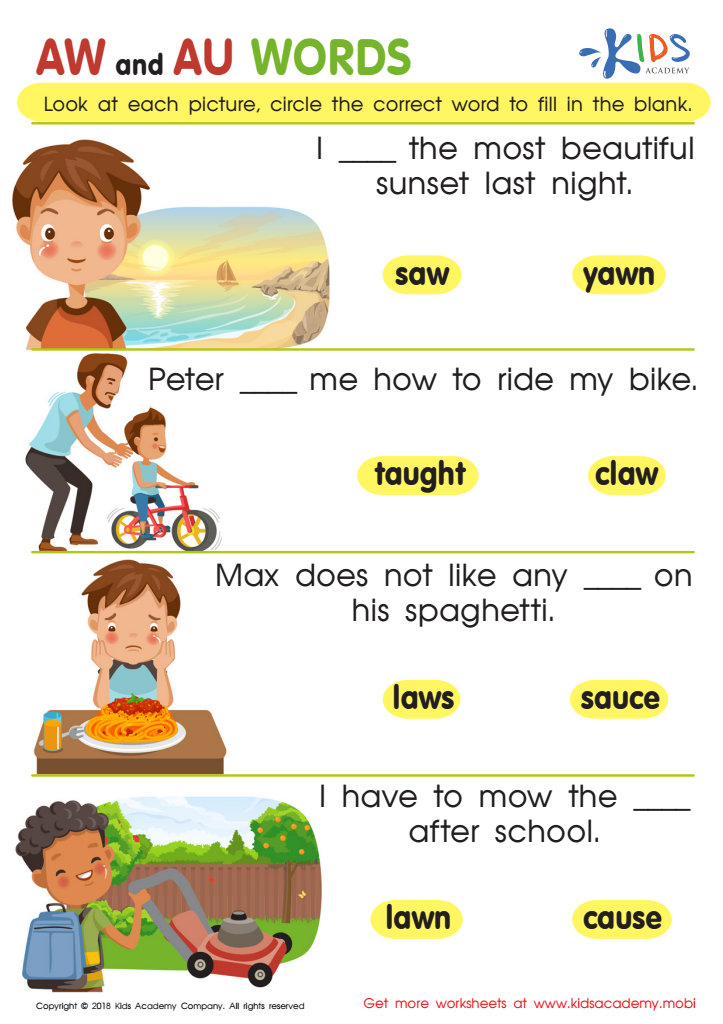

Reading: AW and AU Words Worksheet
Word recognition and understanding vowels are fundamental to becoming a proficient reader, especially for children aged 4-9. During these formative years, children's brains are particularly receptive to language acquisition and development. Teaching word recognition and vowel sounds during this period lays down the foundation for fluent reading and effective communication.
Firstly, vowels are the heart of word formation in the English language, contributing to syllable structure, pronunciation, and word meaning. Without a solid grasp of vowel sounds, children might struggle to decode words accurately, impacting their reading fluency and comprehension. For instance, confusion between vowel sounds like "a" in "cat" and "e" in "pet" can lead to misunderstandings in both spoken and written language.
Moreover, early mastery of word recognition and vowel sounds can boost a child's confidence and interest in learning. Being able to recognize and pronounce words correctly paves the way for better academic performance, as reading skills are crucial across all subjects. This skill also enables children to independently explore books and gain new vocabulary, fostering a love for reading that can last a lifetime.
For parents and teachers, investing time in teaching word recognition and vowels is nurturing a child's future literacy success. This support enables children to progress smoothly from learning to read to reading to learn, opening up a world of knowledge and creativity.

 Assign to My Students
Assign to My Students








